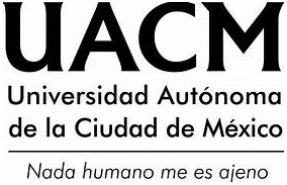Etiology and hermeneutics of reason and classical folk proverb “Treasury of Elves”
DOI:
https://doi.org/10.29092/uacm.v12i27.82Keywords:
Elf, treasure, motif, siglo de oroAbstract
The article deals with the treasure of duendes as a common folk myth that generated a lexicalizacion and proverb, which has numerous allusions and quotations from literary sources, in particular in the Siglo de Oro. Both speeches are compared in the light of the concepts of iconotropisme (Graves) and gift (Mauss), which leads to a hermeneutics and deconstruction of the concept of treasure in these sources, with emphasis on the description of metonymic movement and the opening of the meaning. The literaturising of the folktale culminates in a process of semantic restriction, where treasure is materialized in a unidirectional way and simultaneously moralize as source of deception. On the other hand, the classical concept of agalma is much more all-inclusive view and appearance play a large role, shaping as an isotopy of the visionary and the visibility, which engages well two worldviews. The symbolic devaluation of the gift explains the use of the proverb in the Siglo de Oro.
Downloads
References
Aarne, A. y S. Thompson (1995), Los tipos del cuento folklórico. Helsinki: Academia Scientiarium Fennica.
Alonso, F. (2009), “El folklore gallego sobre la viga de orosu origen y significado”, en Anuario Brigantino, núm. 32, pp. 109-124.
Burton, A. (1621), Anatomía de la melancolía, 3 vols. Madrid: Asociación Española de Neuropsiquiatría.
Calasso, R. (2008), La locura que viene de las ninfas. México: Sexto Piso Editorial.
Camarena, J. y M. Chevalier (2003), Catálogo tipológico del cuento folklórico español: cuentos religiosos. Madrid: Ediciones del Centro de Estudios Cervantinos.
Cencillo, L. (1971), Mito: semántica y realidad. Madrid: Biblioteca de Autores Cristianos.
Delpech, F. (1998), “Libros y tesoros en la cultura española del siglo de oro. Aspectos de una contaminación simbólica”’, en P.M. Cátedra, A. Redondo y M.L. López-Vidriero (dirs.), El escrito en el Siglo de Oro. Prácticas y representaciones, ed. al cuidado de J. Guijarro Ceballos. Salamanca: Ediciones Universidad de Salamanca, 1998, pp. 95-109.
Doménech, F. (ed.) (2008), La comedia de magia, Madrid: Fundamentos.
Eliade, M. (1973), Mito y realidad. Madrid: Editorial Guadarrama.
Feijóo, B.J. (2008), Teatro crítico universal, ed. de Á.-R. Fernández González, t. IV, Discurso III. Madrid: Cátedra.
Graves, R. (1983) [1948], La Diosa Blanca. Gramática histórica del mito poético, traducción de L. Echávarri. Madrid: Alianza Editorial.
Greimas, A.J. (1970), En torno al sentido. Ensayos semióticos. Madrid: Fragua.
Layna, F. (2005), “De tesoros, de duendes y moriscos: a propósito del Quijote”, en P.M. Piñero Ramírez (ed.), Dejar hablar a los textos: Homenaje a Francisco Marquez Villanueva , vol. 2. Universidad de Sevilla, pp. 1125-1136.
Llano Roza de Ampudia, A. (1922), Del folclore asturiano: mitos, supersticiones, costumbres. Madrid: Talleres de Voluntad.
Mauss, M. (1925) [2009], Ensayo sobre el don: forma y función del intercambio en las sociedades arcaicas, Buenos Aires: Katz Barpal Editores.
Missler, P. (2006), “Las hondas raíces del Ciprianillo. 2ª parte: los grimorios”, en Culturas Populares. Revista Electrónica 3, septiembre-diciembre.
Menéndez Pelayo, M. (1880), Historia de los heterodoxos españoles. Madrid: Librería Católica de San José.
Moraga, J. y J.M. Pedrosa (2001), “Cuatro cuentos de la tradición bereber norteafricana”, en Revista de Folklore, núm. 251, pp. 173-180.
Otto, R. (1980), Lo santo. Lo racional y lo irracional en la idea de Dios. Madrid: Alianza Editorial.
Parafita, A. (2006), A Mitologia dos Mouros. Porto: Gailivro.
Pedrosa, J.M. (1998), “El cuento de El tesoro soñado (AT 1645) y el complejo leyendístico de El becerro de oro”, Estudos de Literatura Oral, núm. 4, pp.127-157.
Peirce, C.S. (1987), Obra lógico-semiótica. Madrid: Taurus.
Propp, V. (1974), Las raíces históricas del cuento. Madrid: Editorial Fundamentos.
Rodríguez López, M.I. (2002), Poseidón y el Thiasos marino en el arte mediterráneo: (desde sus orígenes hasta el siglo XVI), tesis doctoral,CD-ROM, Madrid: Universidad Complutense.
Rodríguez Pardo, M. (2010), “Fray Antonio de Fuentelapeña y la racionalidad de los animales”, en Revista Española de Filosofía Medieval, núm. 17, pp. 157-170.
Rohlfs, G. (1979), Estudios sobre el léxico románico. Madrid: Gredos.
Thompson, S. (1955-1958), Motif-index of Folk-literature: A Classification of Narrative Elements in Folktales, Ballads, Myths, Fables, Mediaeval Romances, Exempla, Fabliaux, Jest-books, and Local
Legends, 6 vols. Bloomington: Indiana University Press.
Published
Issue
Section
License
This Journal is licensed under Creative Commons Mexico 2.5. It is allowed to reproduce and disseminate the contents of the Journal for educational or research purposes, not for profit, as long as they are not mutilated and cite the source (Andamios, Revista de Investigación Social) and the author.
The copyright of the articles published in Andamios, Revista de Investigación Social are transferred by the author(s) to Universidad Autónoma de la Ciudad de México when the originals have been accepted, so that they are published and distributed both in the printed and electronic versions of the Journal. However, as established by law, the author(s) retains their moral rights. The author(s) will receive a form of assignment of copyright that they must to sign when their original has been accepted. In the case of collective articles, the signature of one of the authors will suffice, provided that the latter has obtained the consent of the others.
Authors may use the material of their article in other works or books published by themselves, with the condition of quoting Andamios as the original source of the texts.
The articles contained in this publication are the responsibility of their authors and do not compromise the official position of Andamios, Revista de Investigación Social of the Universidad Autónoma de la Ciudad de México.


